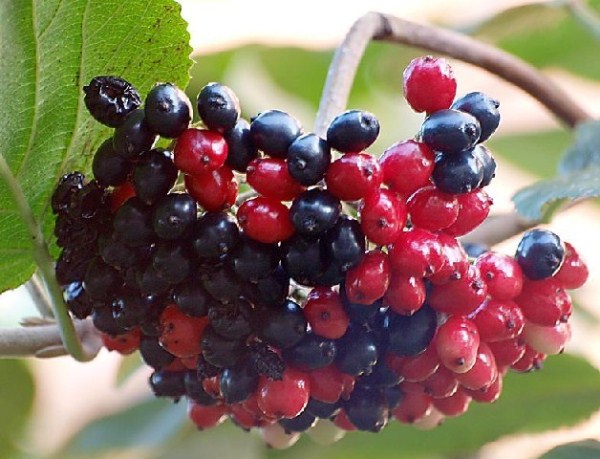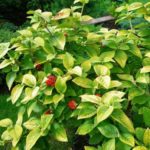A lot of gardeners began to grow an unusually beautiful viburnum Gordovina. The shrub is a close relative of viburnum. Kalina Gordovina may have other names: felt or Mediterranean.
Table of contents
Description varieties viburnum Gordovina
This variety comes from Asia (southwest), North. Africa, Europe. The shrub belongs to the honeysuckle family. In the wild, the plant is distributed in warm areas: Zap.Europe, Transcaucasia, Leningrad region, Siberia, Crimea, Asian regions. In cold areas, viburnum Gordovina perfectly copes with the role of an ornamental plant for landscaping.. It can be successfully grown in many regions. Excluded only subtropical and the Far North. The plant is undemanding to the ground and unpretentious in the care. Until late autumn, the shrub retains shiny black berries and red-pink foliage.
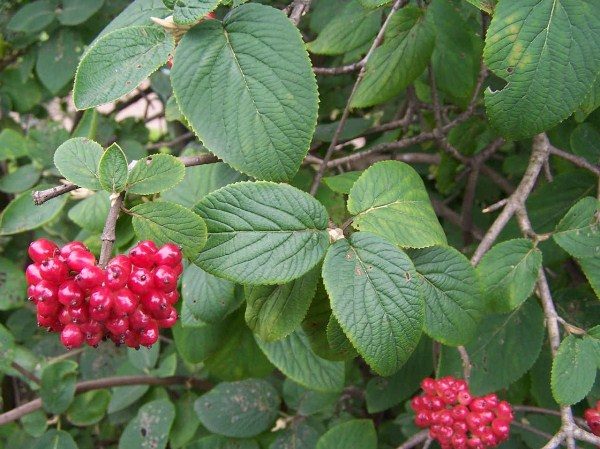
Shrub tall, grows up to five meters tall. It has a dense crown with a diameter of up to three meters. The branches of the plant are very close to each other and the shrub looks compact.
Shrub lives long, sometimes age reaches 50 years. During the period of its existence, it grows a huge root system with a large number of small roots. Together with the soil and vegetation roots form the sod.
The ornamental shrub has wrinkled oval leaves, the length of which reaches 18 cm. The leaves are wide and dense, the color on top of a rich dark green, grayish below. Shoots, branches and foliage pubescent with dense hairs of white color similar to asterisks. The buds are also fluffy and have no scales. Due to abundant hairiness, shrub is called ‘floury’.
The plant begins to bloom in May and continues to bloom in June, the flowering period is almost a month. Numerous inflorescences flap consist of 1.5 centimeters cream-white bell-shaped flowers. From each flower is obtained berry-drupe. During this period, viburnum Gordovina extraordinary beauty. At first, the berries turn red, then turn black. At this time, seedlings consist of black and red fruits at the same time. All berries turn black in September and stay on the bush for more than 20 days. Only in October, viburnum looks not very attractive. The berries shrivel, but the juice is still preserved in them, they can be eaten.
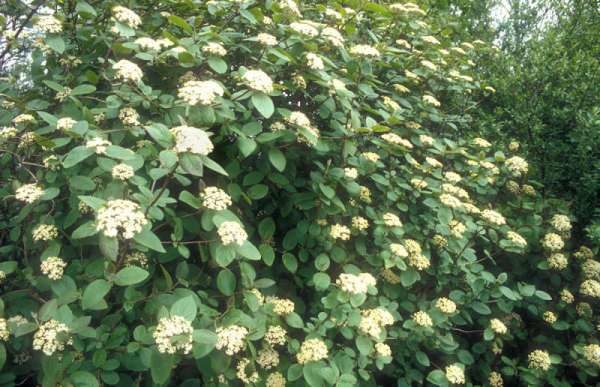
While viburnum berries are red, they taste bitter, tart. Ripe black fruit has a sweet taste. During the collection brush viburnum need to cut shears. If unripe berries come across in the brush, they ripen in the tank. With a 15-year-old bush, yield is usually one full bucket. Berries are consumed fresh, compotes, juices, jellies are made from them. It is great if some fruits remain on Kalina, they will be eaten with pleasure by birds.
Special features
Unlike other types of viburnum, gordovo has a number of features:
- Plant is different decorative qualities from early spring to winter - from flowering to autumn bright colors of foliage;
- Powerful overgrown roots allow the use of shrubs to prevent soil shift on slopes and ravines;
- The gardens and parks look great in quality hedges;
- Perfect adaptation to urban conditions.
- Good combination with broadleaf trees.
Species
Kalina Gordovina has varieties:
- Aurea. Dense shrub with a height of 200 cm. It has a pubescent ovate 10-centimeter leaves of golden-yellow color. Flowers are yellowish-white in inflorescences of a flat shape. Fruits are small red at first and black when ripe.
- Variegata. The plant reaches only 150 cm. The crown of the bush is round with abundant foliage. Wide, 20-centimeter, ovate leaves wrinkled, jagged at the edges. The surface of the leaves is covered with small bright spots.Round berries, the diameter of which is only 7 mm, are first red, then turn black.
- Kalina Gordovina Aurea
- Kalina Gordovina Variegata
Both varieties are incredibly beautiful and are a great decoration.
Advantages and disadvantages
An unusually beautiful ornamental shrub has many advantages:
- frost resistance;
- calmly endures drought;
- can grow in shady areas;
- easy to get used to gas, smoke and dust in urban environments;
- has a high decorative effect;
- rarely amenable to damage by diseases and viburnum leaf beetles;
- the crown and height of the shrub increase annually, by about 30 cm;
- developed root system is used to strengthen the soil prone to erosion.
Breeding
For reproduction pride taken cuttings, layering or seeds.
Seeds
Seed should be sown in late October or in early spring. Before you send them to the ground, you need to hold the seeds in the fridge for 7 months (stratification). Seeding is carried out to a depth of 3 cm. Germination begins with the root, the bud opens only the next year.A young sprout appears from the ground. Experienced gardeners advise to speed up germination:
- three months keep the seeds at t 18 degrees;
- the next three months keep the seeds at t -3 - +5 degrees.
Green cuttings

The material is cut in late June or early July. The third part of the leaves is removed. Sections are placed in water with the addition of a special simulator, accelerating the appearance of roots (Kornevin, IMC). After the formation of roots, cuttings to plant in a greenhouse. You can land on the garden bed. Then you need to make a shelter from a plastic bottle, for example. The cap is regularly removed for airing and watering the germ.
Layering
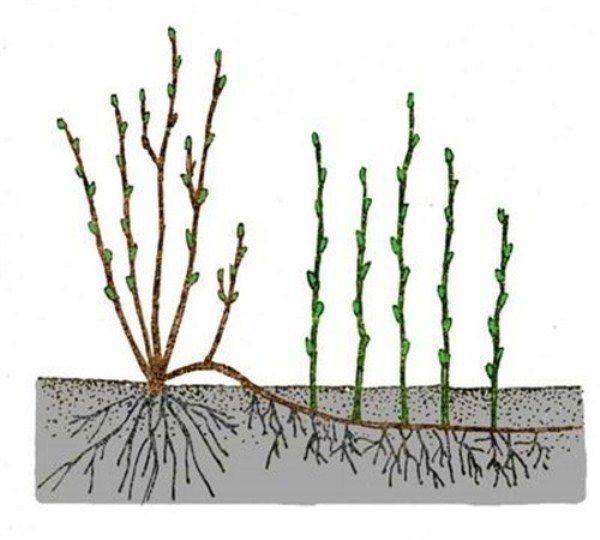
The method consists in bending down coppice shoots to the ground. Spring pre-laid 10 centimeters grooves. Shoots stacked in the grooves and covered with earth. Rooted shoots in the fall, after which they can be transplanted. You can change in the spring.
Dividing bush
The bush is divided both in the spring and in the fall. The plant is divided into several parts, taking into account that each of them was not less 3 buds renewal.
Planting and care
Kalina Gordovina prefers neutral or weak acidity of the soil and good lighting. Does not like the plant sand, peat and podzolic soil. Grows on infertile soils, but flowering and fruiting is deteriorating.
A month before planting, phosphorus, potassium in the form of fertilizers are added to the soil, and peat is added. Spring or autumn is dug landing recess 40 cm wide 50 cm in length and 40-50 cm in depth. The distance between shrubs is at least 3 m.
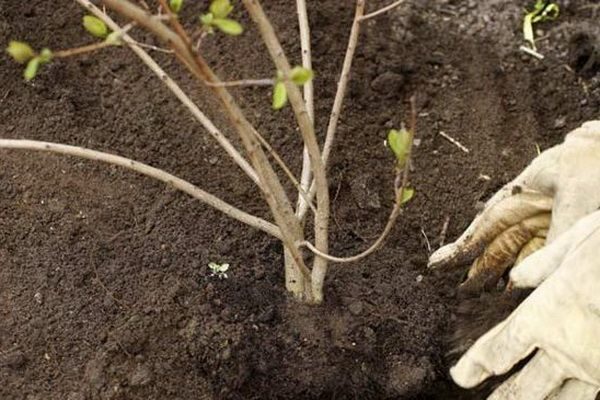
Soil mixture is being prepared:
- organic soil (peat, humus);
- urea (3 tbsp. l.);
- wood ash (1 cup).
Seedlings, the roots of which are closed are placed in the middle of the recess and covered with soil. The root neck should be no more in the soil than on 5 cm. Open roots are distributed on a pile of soil mixture and fall asleep. After planting near the plant is a hole and poured water into it. Then the soil is mulched with peat or sawdust from wood.
Watering
Young plants need to be shed on 40 cm in evening time. Adult bushes require watering during the growing season and during the formation of fruits.
Feedings
Like all trees and shrubs, viburnum Gordovina needs feeding:
- In the spring, before the appearance of leavesurea is added (2 tbsp. l.);
- Before flowering you need to make potassium sulfide (2 tablespoons.);
- In July mineral fertilizer complex is applied (60 g);
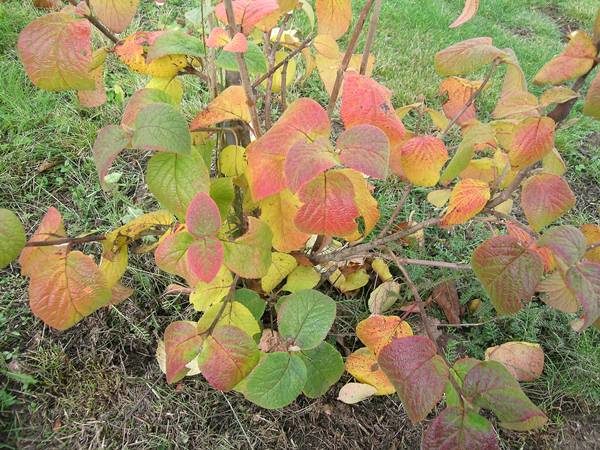
- After two years, in the autumn, before digging up the soil, rotted manure, phosphorus, potassium is introduced. In dry weather, fertilizers are diluted with water.
Pruning
Trimming gordoviny made in the spring. At the same time, sick and old branches are removed. Anti-aging treatment is carried out after six yearsi.e. old branches are cut to the very root. Leave the need for branches of pieces 7 for the fruit bush.
If you want to form Kalina in the form of a treethen the central vertical trunk remains, the rest of the shoots are cut off.Every year it is necessary to cut new shoots and shoots. For branching and beauty of the crown point of growth must necessarily pinch.
Diseases and pests
The shrub is very resistant to diseases and pests, but some still damage the plants.:
- aphid;
- scapula, comma-shaped;
- chelkovaya moth.
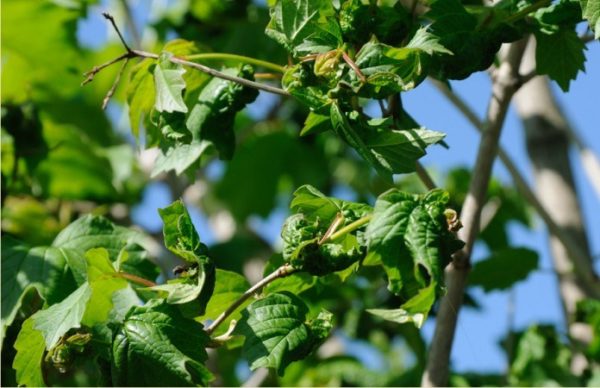
Insecticides help fight pests, preferably with adhesive. The shield can be destroyed by karbofos. For the destruction of aphids to the plant sits trichogram.
Powdery mildew and spotting are affected. Fight against diseases will help the treatment of fungicides. To prevent diseases, tobacco or garlic infusions are processed.
Conclusion
Kalina Gordovina is the plant that remains decorative, despite the environment and lack of care. The main decorative advantage is foliage.. Shrub is ideal for cities, for planting it on the streets, courtyards, squares.
In addition, it is known that berries of the plant have healing properties, especially in combination with honey. Compotes are prepared from berries, jellies, they are dried.
